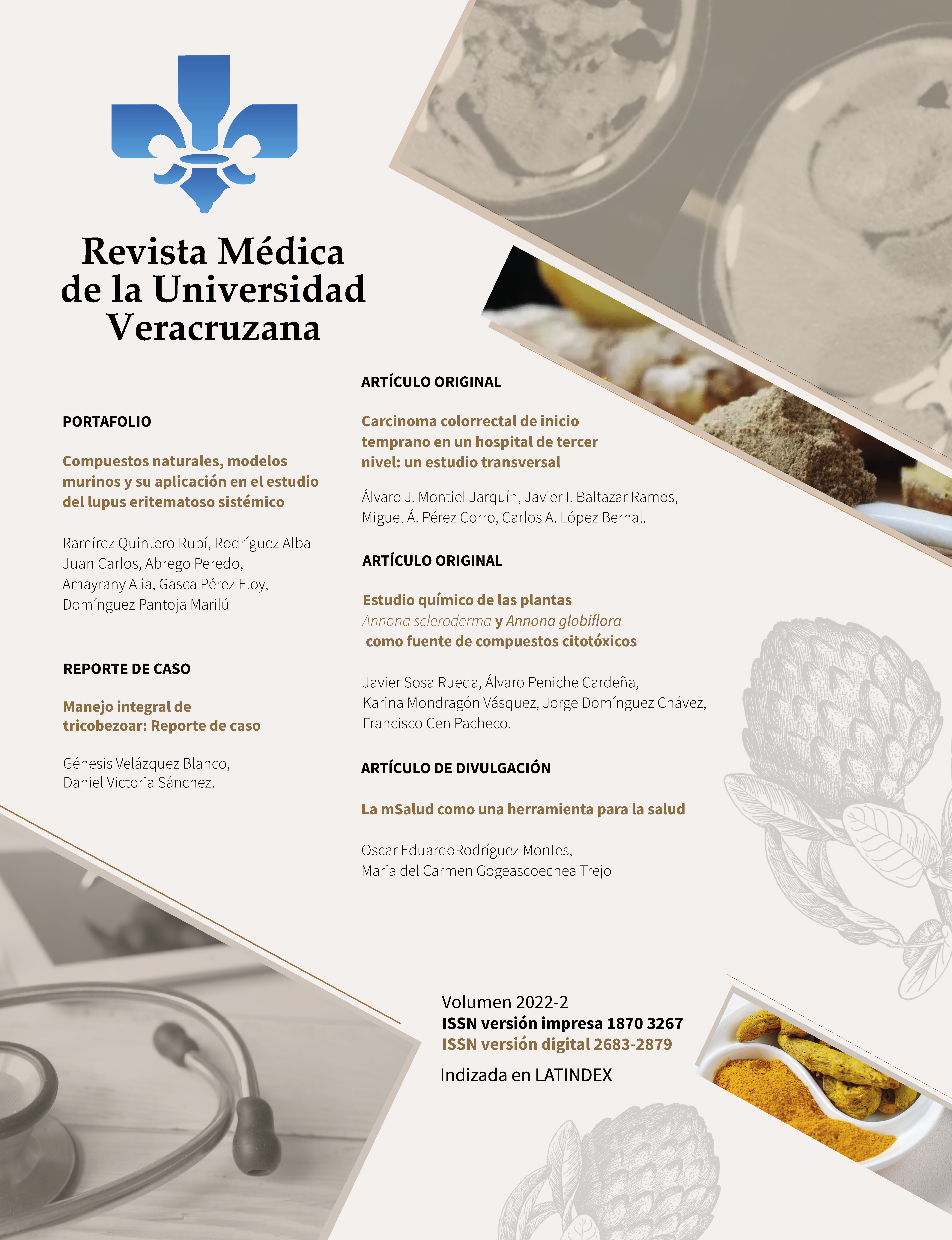Abstract
A principios del siglo XX, el médico y bacteriológo alemán Paul Ehrlich, introdujo el término “horror autotoxicus” para describir el proceso por el cual el sistema inmunológico de un individuo ataca y daña tejidos propios (Silverstein, 2001). Actualmente, este tipo de trastornos son conocidos como enfermedades autoinmunes como por ejemplo el Lupus Eritematoso Sistémico (LES).
References
Abrego-Peredo, A., Romero-Ramírez, H., Espinosa, E., López-Herrera, G., García-García, F., Flores-Muñoz, M., Sandoval-Montes, C., & Rodrí- guez-Alba, J. C. (2020). Naringenin mitigates autoimmune features in lupus-prone mice by modulation of T-cell subsets and cytokines pro- file. PLoS ONE, 15(5). https://doi.org/10.1371/journal.pone.0233138
Castro, C. N., Barcala Tabarrozzi, A. E., Winnewisser, J., Gimeno, M. L., Antunica Noguerol, M., Liberman, A. C., Paz, D. A., Dewey, R. A., & Pe- rone, M. J. (2014). Curcumin ameliorates autoimmune diabetes. Evi- dence in accelerated murine models of type 1 diabetes. Clinical and Ex- perimental Immunology, 177(1), 149–160. https://doi.org/10.1111/ cei.12322.
Domínguez-Pantoja M, López-Herrera G, Romero-Ramírez H, San- tos-Argumedo L, Chávez-Rueda AK, Hernández-Cueto Á, Flores-Mu- ñoz M, Rodríguez-Alba JC. (2018). CD38 protein deficiency induces autoimmune characteristics and its activation enhances IL-10 produc- tion by regulatory B cells. Scand J Immunol;87(6):e12664. https://on- linelibrary.wiley.com/doi/10.1111/sji.12664.
Halkom, A., Wu, H., & Lu, Q. (2020). Contribution of mouse models in our understanding of lupus. In International Reviews of Immunology (Vol. 39, Issue 4, pp. 174–187). Taylor and Francis Ltd. https://doi.org
/10.1080/08830185.2020.1742712
Handono, K., Pratama, M. Z., Endharti, A. T., & Kalim, H. (2015). Treat- ment of low doses curcumin could modulate Th17/Treg balance specifically on CD4+ T cell cultures of systemic lupus erythematosus patients. Central European Journal of Immunology, 40(4), 461–469. https://doi.org/10.5114/ceji.2015.56970
Nusbaum, J. S., Mirza, I., Shum, J., Freilich, R. W., Cohen, R. E., Pillinger,
M. H., Izmirly, P. M., & Buyon, J. P. (2020). Sex Differences in Systemic Lupus Erythematosus: Epidemiology, Clinical Considerations, and Dis- ease Pathogenesis. In Mayo Clinic Proceedings (Vol. 95, Issue 2, pp. 384– 394). Elsevier Ltd. https://doi.org/10.1016/j.mayocp.2019.09.012
Reilly, C. M., & Gilkeson, G. S. (2002). Key Words Lupus Mouse Knock out Autoimmune Use of Genetic Knockouts to Modulate Disease Expression in a Murine Model of Lupus, MRL/lpr Mice.
Silverstein, A. M. (2001). Autoimmunity versus horror autotoxicus: The struggle for recognition. Nature, 2, 279–281.
Srivastava, R. M., Singh, S., Dubey, S. K., Misra, K., & Khar, A. (2011). Immunomodulatory and therapeutic activity of curcumin. In Interna- tional Immunopharmacology (Vol. 11, Issue 3, pp. 331–341). https:// doi.org/10.1016/j.intimp.2010.08.014

This work is licensed under a Creative Commons Attribution-NonCommercial-NoDerivatives 4.0 International License.

